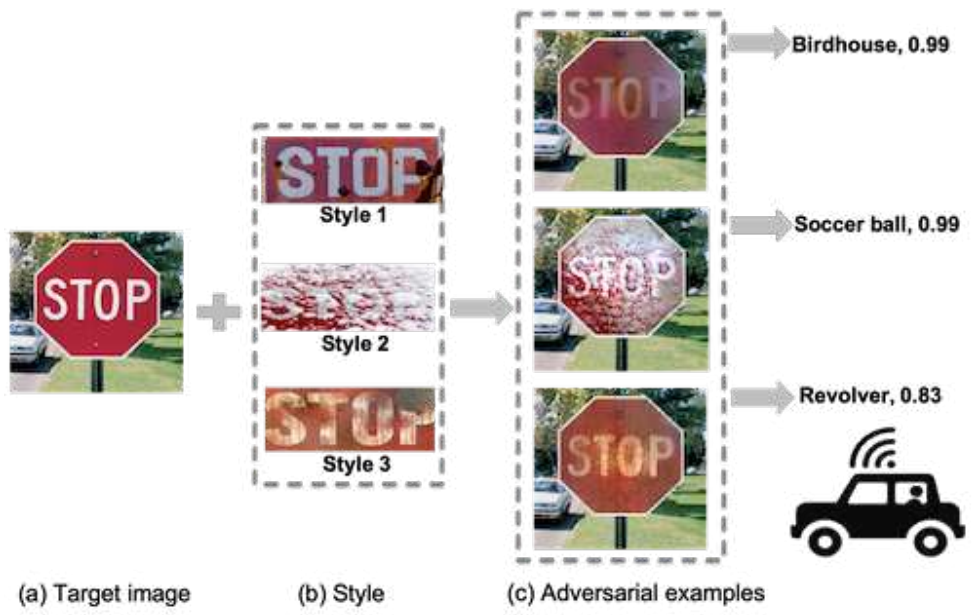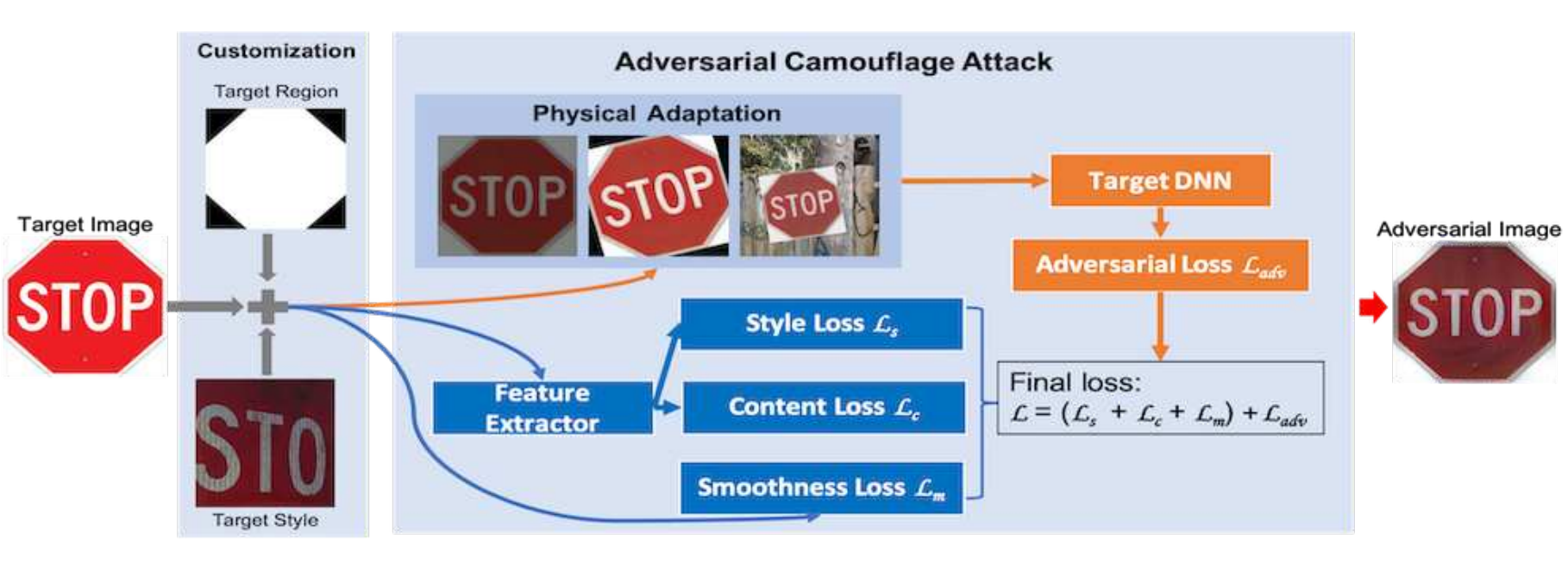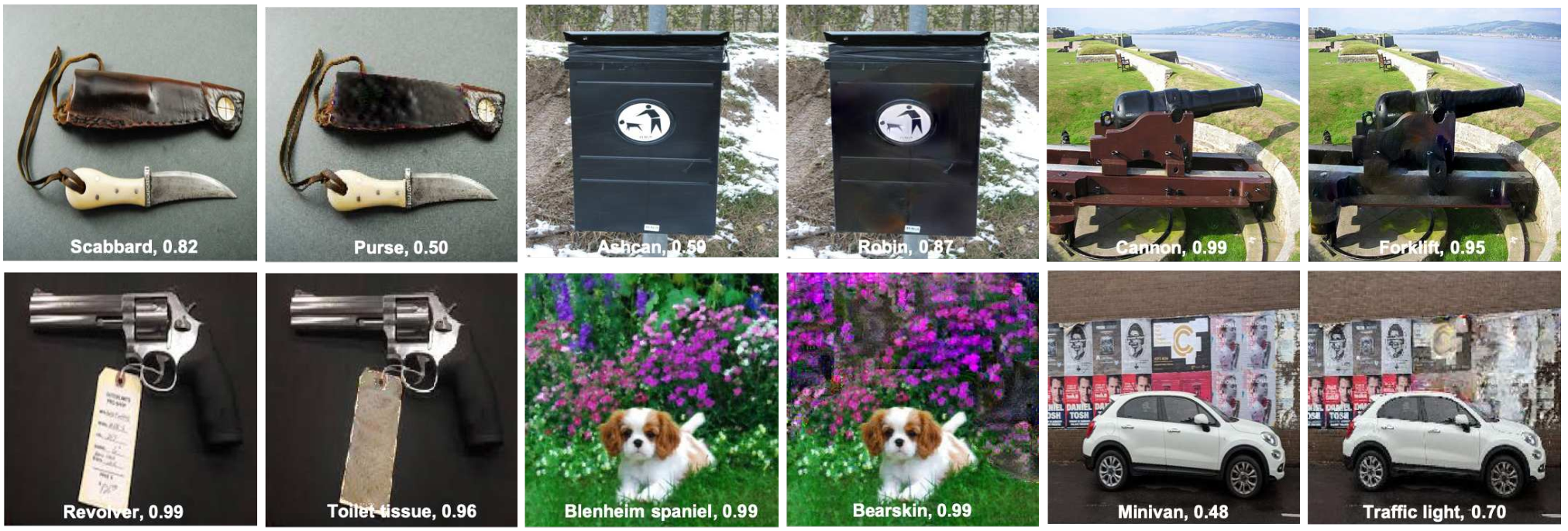# Adversarial Camouflage
Adversarial Camouflage: Hiding Physical-World Attacks with Natural Styles.
🌏 Source
🔬 Downloadable at: https://arxiv.org/abs/2003.08757. CVPR 2020.
Adversarial Camouflage, AdvCam, transfers large adversarial perturbations into customized styles, which are then “hidden” on-target object or off-target background. Focuses on physical-world scenarios, are well camouflaged and highly stealthy, while remaining effective in fooling state-of-the-art DNN image classifiers.
# Main contributions
- Propose a flexible adversarial camouflage approach, AdvCam, to craft and camouflage adversarial examples.
- AdvCam allows the generation of large perturbations, customizable attack regions and camouflage styles.
- It is very flexible and useful for vulnerability evaluation of DNNs against large perturbations for physical-world attacks.

# Background
# Adversarial attack settings
- Digital settings.
- Physical-world settings.
# Adversarial attack properties
- Adversarial strength: represents the ability to fool DNNs.
- Adversarial stealthiness: describes whether the adversarial perturbations can be detected by human observers.
- Camouflage flexibility: the degree to which the attacker can control the appearance of adversarial image.

# Existing attacks

# Algorithm for AdvCam
Normal attacks try to find an adversarial example for a given image by solving the following optimization problem:
Where the
We use style transfer techniques to achieve the goal of camouflage and adversarial attack techniques to achieve adversarial strength. In order to do so, our loss function, which we call the adversarial camouflage loss, becomes:
The final overview of our AdvCam approach:

# Results

Camouflaged adversarial images crafted by our AdvCam attack and their original versions.
# Referred in
- papers
- | Paper Title | Publication | | invisible-adv | IEEE 2019 | | robust-adversarial-perturbation | CVPR 2020 | | perceptual-color-distance | CVPR 2020 | | adversarial-camouflage | CVPR 2020 |